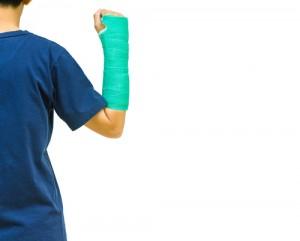
One material being investigated for making these 3D-printed scaffolds is calcium phosphate – after all it is a primary constituent of naturally-formed bone. The problem however is that current 3D printing methods to make calcium phosphate scaffolds require the use of high temperatures. Such temperatures make it impossible important drugs which can stimulate bone growth, antibiotics to prevent infections, or even living cells to the scaffolds.
At the moment, calcium phosphate powder is temporarily bound using an acidic binder chemical – typically phosphoric acid – and then permanently fused together by sintering. Aside from the temperature issue, scaffolds made in this way sometimes retain unwanted binder residues, while during sintering, parts shrink – sometimes in an uneven way – that can cause cracking.
Their approach relies on adding collagen to the phosphoric acid binder solution to create a composite material with the calcium phosphate, they report in the journal Biomaterials. Collagen is the most abundant structural protein in the body and is a critical component of bone, adding to its strength and toughness. The team – from the University of Rochester, Alfred University and the University of California San Diego – also added a surfactant to the mix to improve the printability of the material.
They printed scaffolds using the composite material on an adapted 3D Systems’ ZPrinter 450 and subjected them to a series of laboratory tests. They found the collagen composite scaffolds were tougher than those made using calcium phosphate alone, and were also better at encouraging the growth of living cells. Moreover, the improved scaffolds were as effective in bridging bone defects in animal models as regular bone grafts, but in common with prior studies of 3D printed scaffolds, were unable to stimulate complete healing.
The researchers suggest their findings add further evidence for the idea that 3D printed scaffolds must be used alongside bone growth factors for cells to help induce new bone formation.
“Inkjet printing of collagen solutions with high resolution has not been previously utilized in 3D printing of calcium phosphates,” they write. “This study demonstrates the feasibility of these processes and the mechanical and cellular benefits of … collagen inclusion.”
Let’s hear your opinion on this process in the 3D printed bone graft forum thread on 3DPB.com.